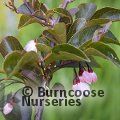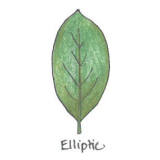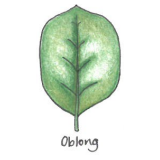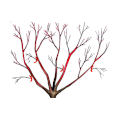Plants by mail order since 1984, over 4100 plants online today
Nursery & Gardens open: Mon - Sat 8:30 - 17:00 & Sun 10:00 - 16:00
Pop up café: open weather dependent
- Shop Now
- Burncoose Specialities
- This Month
- Offers & Promotions
- RHS Chelsea Flower Show 2024
- 40 years at Burncoose
- Engage With Us
- Information, Help & Advice
- About Us & Our Services
- Terms & Conditions
- Log In / Register

STYRAX japonicus 'Pink Snowbell'
Commonly known as Japanese snowbell
Pale pink scented flowers.
-
DeciduousMinutely toothed, glossy, mid- to dark green leaves, purple-bronze when young, to 10cm (4in) long, turning yellow or red in autumn
-
 Shades of pinkAll shades of pink through to Carmine (red)Pale pink
Shades of pinkAll shades of pink through to Carmine (red)Pale pink -
 White
White -
 Height4m (13ft)
Height4m (13ft) -
 Spread3m (10ft)
Spread3m (10ft) -
TreeSlow-growing, graceful, rounded to spreading tree with a profusion of flowers hanging from the undersides of the branches in early to midsummer
-
 Full sun
Full sun -
 Partial shade
Partial shade
STYRAX japonicus 'Pink Snowbell'
-
Additional Features
 Good to knowCan be pruned after flowering to restrict its sizeOrnamental barkOn older branches the bark splits to reveal orange inner bark providing winter interest
Good to knowCan be pruned after flowering to restrict its sizeOrnamental barkOn older branches the bark splits to reveal orange inner bark providing winter interest Pests & DiseasesTrouble free
Pests & DiseasesTrouble free Place of originChina, Korea, JapanResistant to honey fungusThese plants have little or few problems with honey fungus.
Place of originChina, Korea, JapanResistant to honey fungusThese plants have little or few problems with honey fungus. -
Flower ShapeBell/LanternBell-shaped 1.5cm (½in) long
-
Garden Location/ConditionsSuitable for small gardensWoodland garden
-
HardinessFully hardy
-
Leaf margin
 Serrulate
Serrulate(see photos above) -
Leaf shape
 Elliptic
Elliptic(see photos above)  Oblong
Oblong(see photos above) -
Pruning group
 Pruning group 1Suitable for: Deciduous and evergreen trees, and some deciduous shrubs.
Pruning group 1Suitable for: Deciduous and evergreen trees, and some deciduous shrubs.
Pruning: Minimal pruning required. Prune wayward or crossing branches to maintain a healthy framework.
When: When dormant in the late winter/early spring. Some in the summer/autumn to prevent bleeding of sap.
-
Scented PlantsScented flowers
-
Seasonal InterestAutumnSpringSummerWinter
-
Soil ConditionsFertile moist well-drained soilHumus-richNeutral to acid soil
-
Wildlife
 Bee friendly
Bee friendly
Jan
Feb
Mar
Apr
May
Jun
Jul
Aug
Sep
Oct
Nov
Dec
Useful extras...
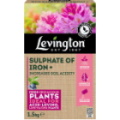
Fertilisers & Feeds - Levington
Sulphate of Iron
Boosts soil acidity.
Feeds ericaceous plants and helps prevent moss.
Corrects leaf yellowing caused by iron deficiency.
Easy to use, low dust granules
Only £11.00

Fertilisers & Feeds - Vitax
Q4 Pelleted Fertiliser
A useful fertiliser suitable for use on a wide variety of plants. Q4 provides all the nutrients and trace elements essential for vigorous growth, abundant flowering and ripening of fruit.
3 options from £6.00
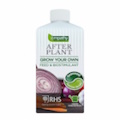
Fertilisers & Feeds - Empathy
Afterplant - Grow Your Own
AFTER PLANT GROW YOUR OWN seaweed is ready to use liquid concentrate that was specially formulated be used on all edible plants.
Only £8.00

Fertilisers & Feeds - Empathy
Afterplant - Tomatoes
AFTER PLANT TOMATO FEED Liquid Concentrate with Bio stimulant is a high potash liquid concentrate containing seaweed extract, plant derived amino acids and other nutrients specifically formulated to benefit tomatoes and greenhouse plants.
Only £8.00
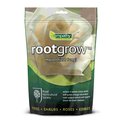
Fertilisers & Feeds - Empathy
Rootgrow mycorrhizal fungi
Recommended by the RHS. Contains Rootgrow™ mycorrhizal fungi. Suitable for all trees and shrubs (except rhododendrons, azaleas, heathers, cranberries and blueberries)
3 options from £3.00

Fertilisers & Feeds - Empathy
Rootgrow Ericoid mycorrhizal fungi
This specially adapted Rootgrow™ mycorrhizal fungi will boost the growth of acid-loving plants like rhododendrons, azaleas, heathers and blueberries.
It contains ericoid and arbuscular mycorrhizal fungi, which are found in poor acidic soils where ericaceous plants naturally grow.
Only £7.50



